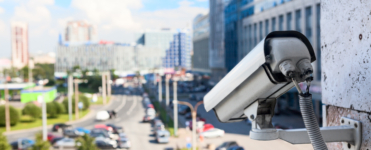
How transparency enables accountability
This article was prepared by Liz Hempowicz for the Restoring Accountability essay series. The views expressed in this article are the author’s own and do not necessarily reflect the views or opinions of Americans for Prosperity Foundation, which encourages the expression of diverse viewpoints within a culture of civil discourse and mutual respect.
Imagine you’ve signed a one-year lease for an apartment at $1,000 a month, but three months into the lease, the landlord asks you to pay $2,000 a month. Assuming you want to hold the landlord accountable to the agreement you both signed, do you think it would be easier to do so with a copy of your lease agreement or without one?
Sure, even without the lease you might eventually prevail, but having a copy or access to a copy would certainly make that accountability more likely, not to mention timelier.
The same is true of accountability in government. The greater access the public has to information about how the federal government is operating, the greater likelihood that the government will be held to account for abuses of power.
Transparency isn’t a silver bullet to government accountability, but it sets the stage for an informed conversation about the actions of our government. Access to information about how the government is operating empowers the public to conduct oversight, leading to true government accountability.
For example, public access to information and data about how the Small Business Administration (SBA) first administered the Paycheck Protection Program (PPP), and the resulting scrutiny, led to crucial reforms.
The program was established to help the members of the small business community hardest hit by the coronavirus pandemic. Yet once information on who actually received the loans started trickling out, we saw how structural flaws allowed Chinese state-owned companies and businesses owned by a Ukrainian billionaire-oligarch to receive this limited aid. Meanwhile, small businesses across the country were shut out of the program’s first round of funding and traditionally underserved small businesses were the least likely to receive the federal loans.
Transparency into the program that could eventually dole out more than $800 billion dollars in forgivable loans facilitated massive public scrutiny. National newspapers, local newsrooms, nonprofit organizations, executive branch watchdogs, and congressional oversight bodies all issued reports on where the money really went, and they found that the program was benefiting larger companies with access to additional capital at the expense of what one would consider to be a small business.
All this engagement eventually led to policy changes in legislation and executive policy, and the ongoing relief program has gone through multiple iterations to try to better achieve its intended purpose. For example, the COVID-19 relief bill that passed Congress in December 2020 prohibited Chinese state-owned companies from benefiting from the renewed small business aid program. The bill also explicitly designated that a portion of the additional appropriations to the PPP be distributed by community financial institutions and mission-based lenders, which are better situated to ensure distribution in a more equitable way.
That’s not to suggest that the PPP is perfect now, and the Project on Government Oversight plans to continue its work to push for accountability in this and other COVID-19 relief programs. Most recently, we reported that a company owned by a man who recently paid $20 million to settle claims that they defrauded the government by falsely claiming to be a small business, received a $5 million dollar PPP loan intended for small businesses. At least one senator has now recommended that this company should be “near the top of the list” for SBA scrutiny of the PPP loan.
But this example shows what a little transparency can help accomplish. Because of the public information on how the federal government and banks were instituting this program, Congress and independent watchdogs were able to hold the government accountable to the law as written.
Moreover, the public was able to hold Congress accountable to its stated objectives that the PPP and other COVID-19 relief programs would go to communities hardest hit by the pandemic. It’s hard to imagine this level of accountability without transparency.
It’s worth noting that the public and Congress received access to the data about the PPP program only after a fight to drag this information into the sunshine. Rather than engage in months of costly litigation, the SBA should have proactively released this data, as it had done for previous loans issued through the same underlying loan program over the course of 30 years.
The next chapter in the fight for government information must include greatly expanding the types of information and data the government proactively releases to the public. Lowering barriers to accessing information will help facilitate rigorous oversight and greater accountability.
Liz Hempowicz is director of public policy at the Project on Government Oversight. Read other essays in the Restoring Accountability series here.


